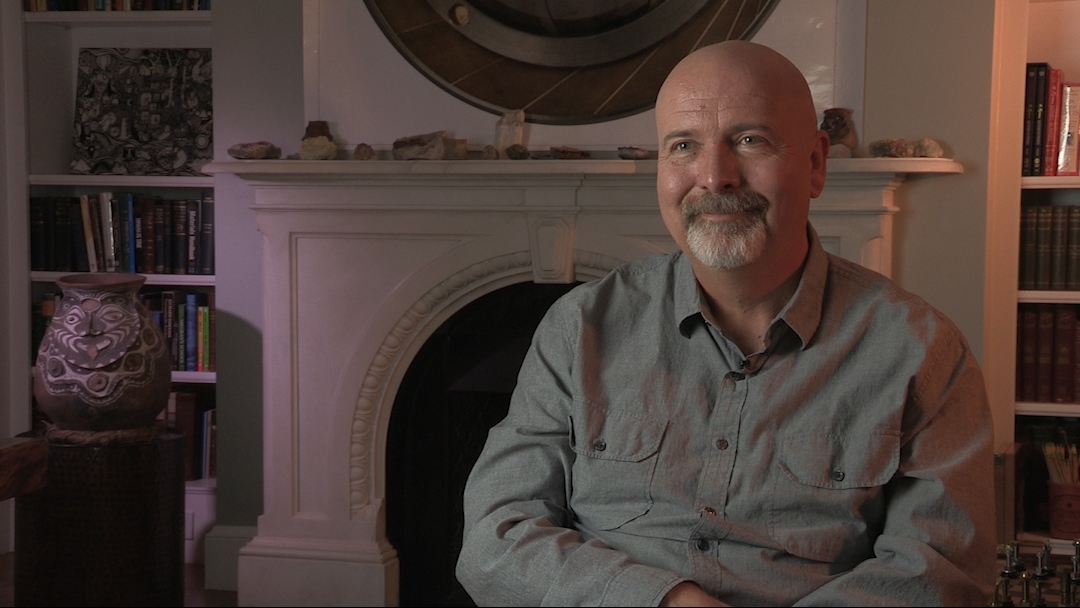NEXT STORY

The 'Cyc' project and why it was flawed
RELATED STORIES

NEXT STORY

The 'Cyc' project and why it was flawed
RELATED STORIES


|
Views | Duration | |
|---|---|---|---|
| 201. Wars and disappointment in the government | 80 | 02:30 | |
| 202. 'The government is a pretty lousy customer' | 79 | 01:47 | |
| 203. My visit to Guantanamo Bay | 82 | 03:43 | |
| 204. The map of knowledge and the map of ignorance | 86 | 03:14 | |
| 205. The 'Cyc' project and why it was flawed | 82 | 02:09 | |
| 206. Freebase – the first free semantic network | 73 | 03:33 | |
| 207. Freebase pioneers semantic search | 70 | 04:29 | |
| 208. 'Better search makes people smarter' | 1 | 78 | 02:00 |
| 209. Emergency breach manoeuvre in a nuclear submarine | 70 | 04:14 | |
| 210. Saying 'left' instead of 'right' in a nuclear submarine | 70 | 02:17 |


Remember I said there were two ideas of artificial intelligence. One of them was kind of this neural network idea and the other was the symbolic idea. Well, I've always been interested in the symbolic idea, too, but the sort of big, emergent version of the symbolic idea, which is: if you actually had a semantic network that knew information, like it knew your name is George Dyson and it knew all of the connections to all the other events. You know, your connection to Bellingham, your connection to Baidarkas, your... that knowing all these entities and the connections between them is an important part of what intelligence is about, is knowledge. And so that was another thing I wanted to do with the Connection Machine, I was kind of inspired by this thing that Scott Fahlman had done, of a way of searching through networks like this, semantic networks, and reasoning from them. So I was very, very interested in representing knowledge this way in the Connection Machine.
But it never really played out, because the Connection Machine... there was no commercial market for it. But I always had that dream of building a big knowledge graph of all this information. And then, when Neal Stephenson wrote his book, Diamond Age, it had a story in it about the illustrated primer, which was a book that kind of knew everything and adapted to the student that read it. And for years, I had been interested in education, elementary education. And I just loved this idea. I was very inspired by it. And so I started thinking about how you would go about building it, and I realised well, one thing, it would need to know everything. It would need this giant network. And so it would need to know what there was to be known. And that connected with something else that I've always had as a dream, which is I've always imagined having a map of knowledge so that I could see a map of my ignorance. I mean, imagine... I remember looking at the globe and thinking, 'Well, I've been there, I know what that is, but I haven't been there, I don't know what that is.' And so in some sense the globe was a map of my geographical ignorance, but imagine you had a map of all the things that could be known and you got to see: oh, there's this whole region that I don't know about. You know, this is like the algebraic topology. You know, the mountains of algebraic topology are unexplored. And so that idea has always fascinated me, but then I was thinking about how to do a Diamond-Age-like book. I realised that if I made this network, I could finally print this map of my ignorance. And so I got very excited about that idea.
W Daniel Hillis (b. 1956) is an American inventor, scientist, author and engineer. While doing his doctoral work at MIT under artificial intelligence pioneer, Marvin Minsky, he invented the concept of parallel computers, that is now the basis for most supercomputers. He also co-founded the famous parallel computing company, Thinking Machines, in 1983 which marked a new era in computing. In 1996, Hillis left MIT for California, where he spent time leading Disney’s Imagineers. He developed new technologies and business strategies for Disney's theme parks, television, motion pictures, Internet and consumer product businesses. More recently, Hillis co-founded an engineering and design company, Applied Minds, and several start-ups, among them Applied Proteomics in San Diego, MetaWeb Technologies (acquired by Google) in San Francisco, and his current passion, Applied Invention in Cambridge, MA, which 'partners with clients to create innovative products and services'. He holds over 100 US patents, covering parallel computers, disk arrays, forgery prevention methods, and various electronic and mechanical devices (including a 10,000-year mechanical clock), and has recently moved into working on problems in medicine. In recognition of his work Hillis has won many awards, including the Dan David Prize.
Title: The map of knowledge and the map of ignorance
Listeners: George Dyson Christopher Sykes
Christopher Sykes is an independent documentary producer who has made a number of films about science and scientists for BBC TV, Channel Four, and PBS.
Tags: Diamond Age, Neal Stephenson
Duration: 3 minutes, 14 seconds
Date story recorded: October 2016
Date story went live: 05 July 2017